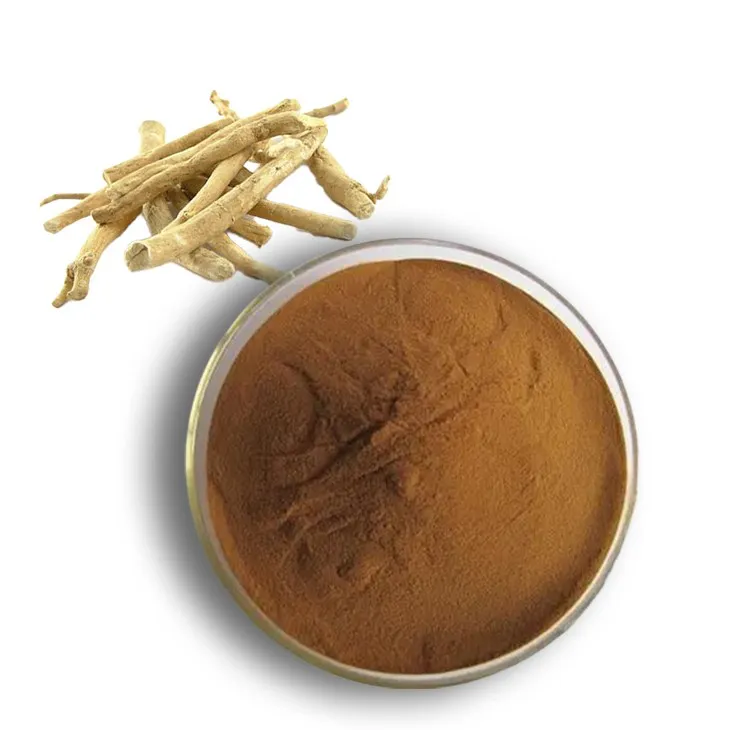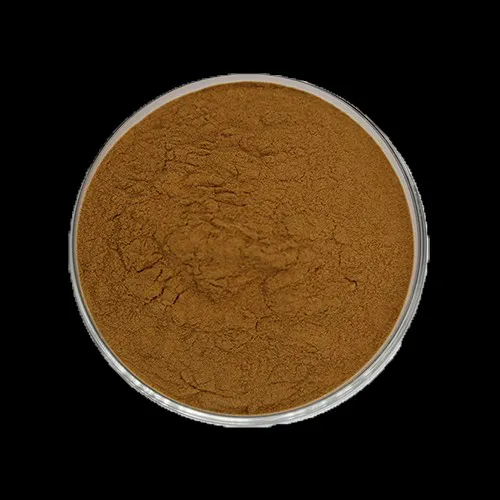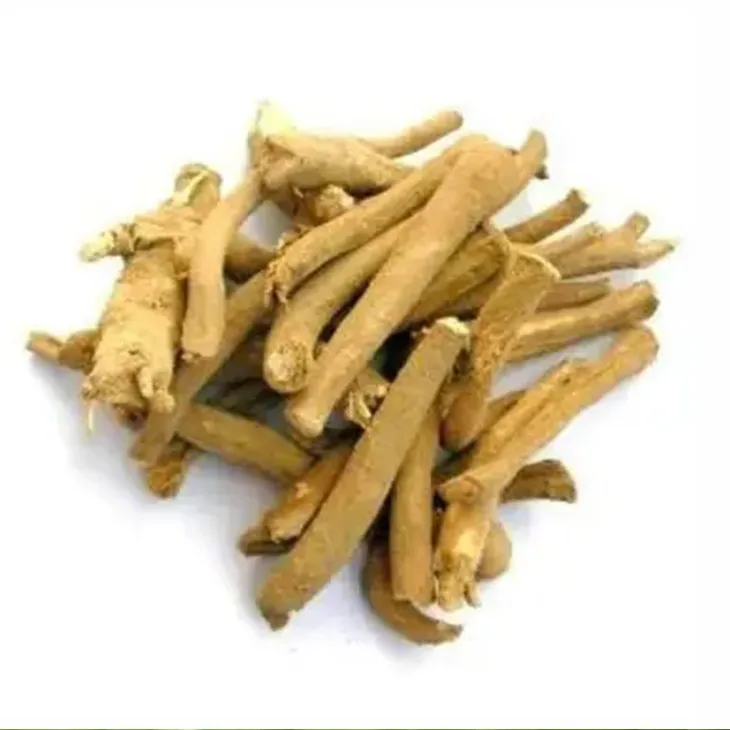- 0086-571-85302990
- sales@greenskybio.com
Active components in Withania somnifera extract.
2024-11-29

Introduction
Ashwagandha extract is a remarkable natural product that has gained significant attention in recent years. It is rich in a variety of bioactive components, each contributing to its diverse range of potential health benefits. This extract has been used in traditional medicine systems for centuries, and modern scientific research is now uncovering the mechanisms behind its efficacy.

Withaferin A: A Prominent Withanolide
1. Anti - cancer Potential
Withaferin A, a major active ingredient in Ashwagandha extract, is a type of withanolide. It has been extensively studied for its anti - cancer potential. Cancer remains one of the leading causes of death worldwide, and the search for effective and selective anti - cancer agents is ongoing. Withaferin A shows great promise in this regard.
2. Inducing Apoptosis in Cancer Cells
One of the key mechanisms through which Withaferin A exerts its anti - cancer effect is by inducing apoptosis, which is also known as programmed cell death. In cancer cells, the normal regulatory mechanisms that control cell growth and division are disrupted. Withaferin A can target these abnormal cells and initiate the apoptotic process, leading to their death.
For example, in breast cancer cells, research has shown that Withaferin A can disrupt key signaling pathways involved in cell survival, such as the PI3K - Akt pathway. By interfering with these pathways, the cancer cells are more likely to undergo apoptosis. This is a crucial aspect as it allows for the selective targeting of cancer cells while sparing normal cells.
3. Selectivity for Cancer Cells
The selectivity of Withaferin A for cancer cells is a highly desirable property. Unlike some traditional chemotherapy drugs that can have significant side effects on normal cells, Withaferin A has the ability to distinguish between cancerous and non - cancerous cells. This selectivity is not yet fully understood but is thought to be related to differences in cell membrane composition, receptor expression, and intracellular signaling pathways between cancer and normal cells.
Studies in vitro have demonstrated that normal cells, such as fibroblasts, are relatively unaffected by Withaferin A at concentrations that are effective in killing cancer cells. This provides hope for the development of more targeted and less toxic cancer treatments in the future.

Glycosides in Ashwagandha Extract
1. Enhancing Bioavailability
Glycosides present in Ashwagandha extract play a crucial role in the overall effectiveness of the extract. One of their important functions is to enhance the bioavailability of other active components. Bioavailability refers to the proportion of a drug or active compound that reaches the systemic circulation and is available to exert its pharmacological effects.
For example, they can modify the solubility and absorption characteristics of other withanolides or phenolic compounds in the extract. By increasing the bioavailability of these components, glycosides can potentiate their physiological effects.
2. Physiological Effects
In addition to enhancing bioavailability, glycosides have their own physiological effects. One such effect is on digestion and nutrient absorption. They can interact with the cells lining the digestive tract, promoting the secretion of digestive enzymes and enhancing the uptake of nutrients such as vitamins, minerals, and amino acids.
Research has also suggested that glycosides in Ashwagandha may have a role in modulating the gut microbiota. A healthy gut microbiota is essential for overall health, and any disruption can lead to various diseases. By influencing the composition of the gut microbiota, glycosides may contribute to maintaining a healthy digestive system.

Phenolic Compounds in Ashwagandha Extract
1. Antioxidant Activity
The phenolic compounds present in Ashwagandha extract are important contributors to its antioxidant properties. Oxidative stress is a major factor in the development of many chronic diseases, including cardiovascular diseases, neurodegenerative disorders, and cancer. Antioxidants help to counteract the harmful effects of reactive oxygen species (ROS) that are generated during normal cellular metabolism and in response to environmental factors such as pollution and radiation.
Phenolic compounds in Ashwagandha extract can scavenge free radicals, which are highly reactive molecules that can damage cells and DNA. By neutralizing these free radicals, they can protect cells from oxidative damage and reduce the risk of developing various diseases.
2. Antimicrobial Activity
Another significant aspect of phenolic compounds in Ashwagandha extract is their antimicrobial activity. Infections caused by bacteria, fungi, and viruses are a major global health concern. The use of natural antimicrobial agents has gained interest due to the increasing problem of antibiotic resistance.
Phenolic compounds in Ashwagandha extract can inhibit the growth of a variety of microorganisms. They can disrupt the cell membranes of bacteria, interfere with fungal spore germination, and may also have antiviral effects. This antimicrobial activity makes Ashwagandha extract a potential candidate for the development of new antimicrobial drugs or as a natural supplement to support the immune system in fighting infections.

Conclusion
In conclusion, Ashwagandha extract is a multi - faceted natural resource with a rich array of active components. Withaferin A, glycosides, and phenolic compounds each contribute unique properties to the extract. The anti - cancer potential of Withaferin A, the bioavailability - enhancing and physiological effects of glycosides, and the antioxidant and antimicrobial activities of phenolic compounds all make Ashwagandha extract a valuable resource for medicine, nutrition, and health maintenance.
However, more research is still needed to fully understand the mechanisms of action of these components, their interactions with each other, and their long - term safety and efficacy in humans. As the field of natural product research continues to grow, Ashwagandha extract holds great promise for the development of new drugs and dietary supplements to improve human health.
FAQ:
What are the main active components in Ashwagandha extract?
The main active components in Ashwagandha extract include Withaferin A (a withanolide), glycosides, and phenolic compounds.
What is the significance of Withaferin A in Ashwagandha extract?
Withaferin A is a major active ingredient in Ashwagandha extract. It has anti - cancer potential as it can induce apoptosis in cancer cells while leaving normal cells unharmed, making it a promising candidate for cancer treatment research.
How do glycosides in Ashwagandha extract function?
Glycosides in Ashwagandha extract play a crucial role. They can enhance the bioavailability of other active components and also have their own physiological effects such as improving digestion and nutrient absorption.
What role do phenolic compounds play in Ashwagandha extract?
Phenolic compounds in Ashwagandha extract contribute to the antioxidant and antimicrobial activities of the extract.
Why is Ashwagandha extract considered a multi - faceted natural resource?
Ashwagandha extract is considered a multi - faceted natural resource because its various active components have implications for medicine, nutrition, and health maintenance.
Related literature
- Bioactive Compounds in Ashwagandha: A Review of Their Potential Health Benefits"
- "Withaferin A: A Promising Anti - cancer Agent from Ashwagandha"
- "The Role of Glycosides in Ashwagandha and Their Impact on Health"
- ▶ Hesperidin
- ▶ citrus bioflavonoids
- ▶ plant extract
- ▶ lycopene
- ▶ Diosmin
- ▶ Grape seed extract
- ▶ Sea buckthorn Juice Powder
- ▶ Beetroot powder
- ▶ Hops Extract
- ▶ Artichoke Extract
- ▶ Reishi mushroom extract
- ▶ Astaxanthin
- ▶ Green Tea Extract
- ▶ Curcumin Extract
- ▶ Horse Chestnut Extract
- ▶ Other Problems
- ▶ Boswellia Serrata Extract
- ▶ Resveratrol Extract
- ▶ Marigold Extract
- ▶ Grape Leaf Extract
- ▶ blog3
- ▶ blog4
-
The best cactus extract on the market.
2024-11-29
-
High - quality lily extract products.
2024-11-29
-
Organic Clove Powder Factory.
2024-11-29
-
Chinese suppliers of chastity berry extract.
2024-11-29
-
Oat Straw Extract Powder
2024-11-29
-
Soy Extract
2024-11-29
-
Plantain extract
2024-11-29
-
Kelp Extract Powder
2024-11-29
-
Selenium yeast
2024-11-29
-
Europen Bilberry Extract
2024-11-29
-
Longan Extract
2024-11-29
-
Lotus leaf extract
2024-11-29
-
Acerola Extract
2024-11-29
-
Curcumin Extract
2024-11-29





















